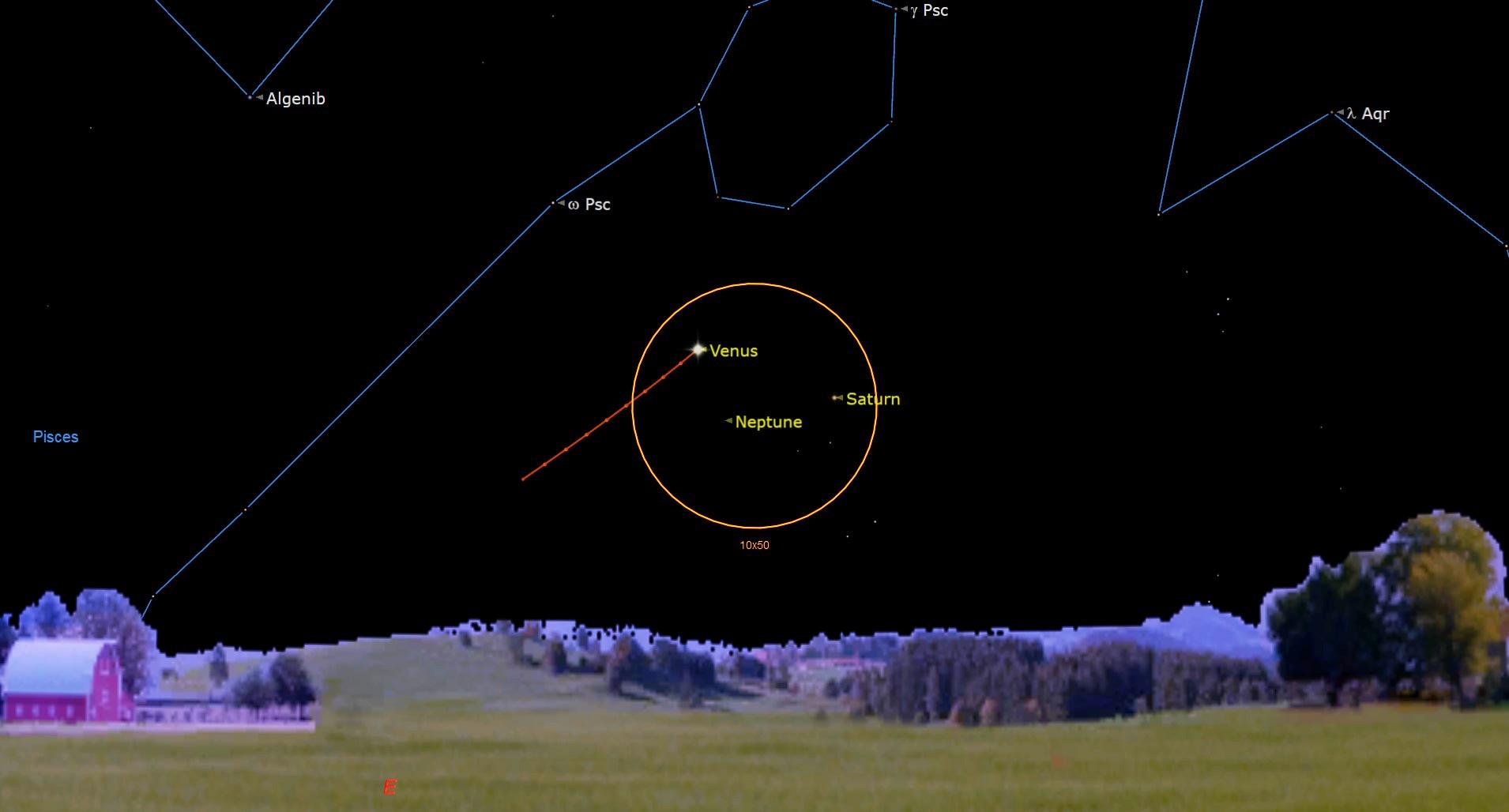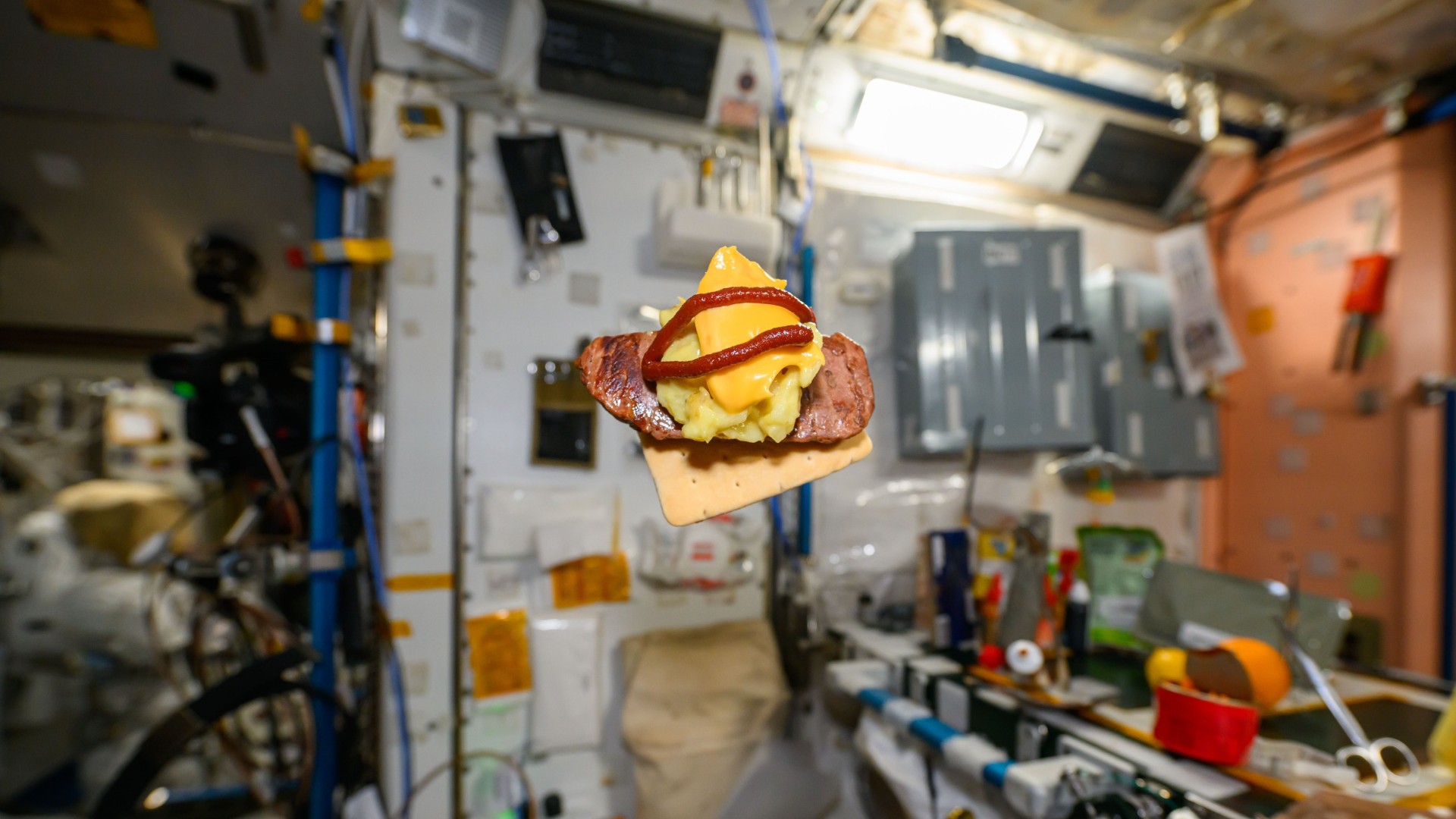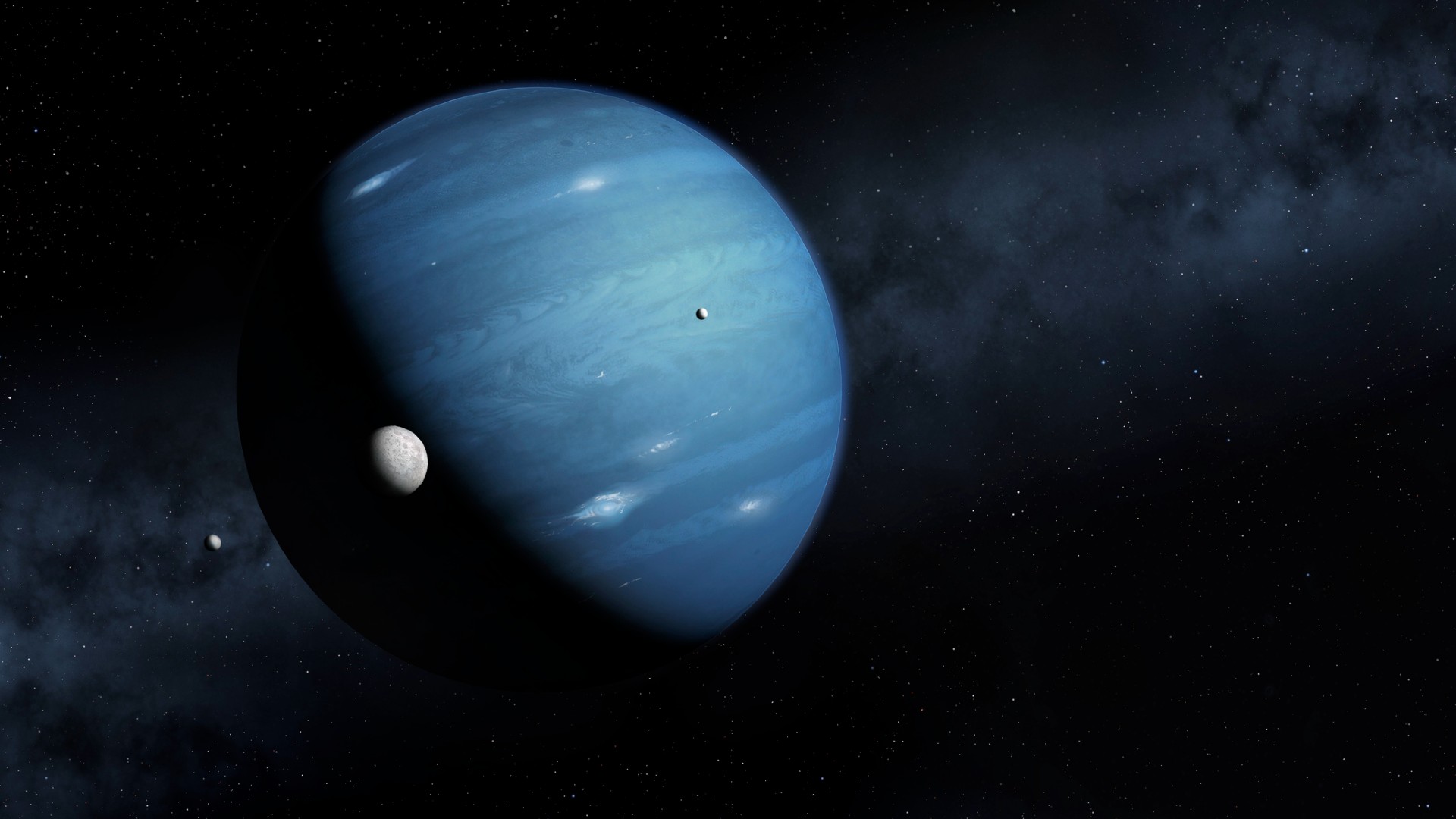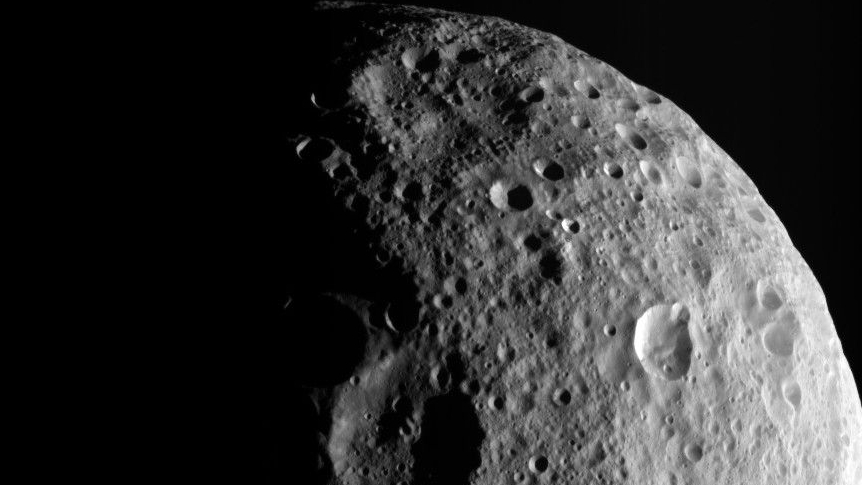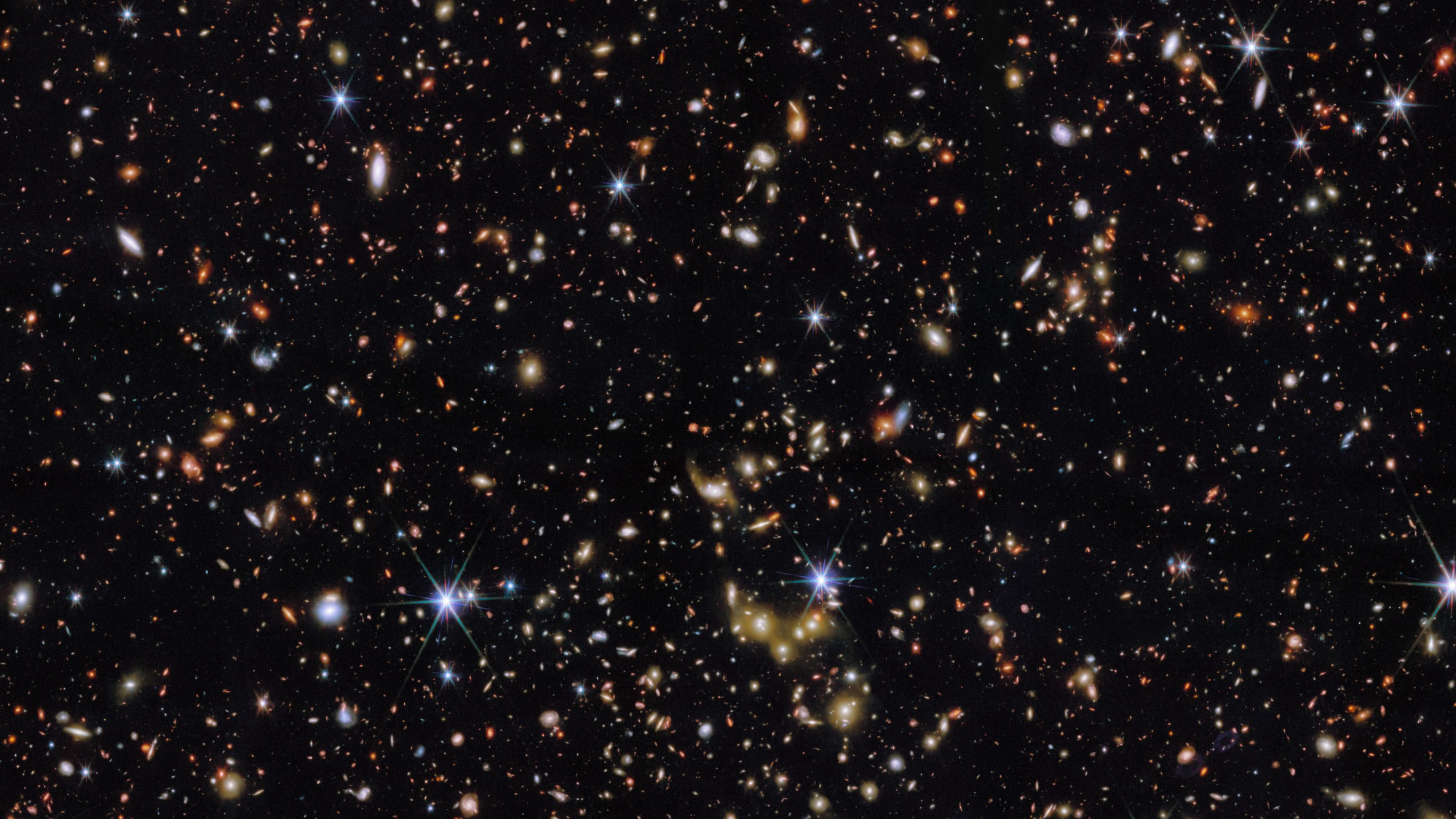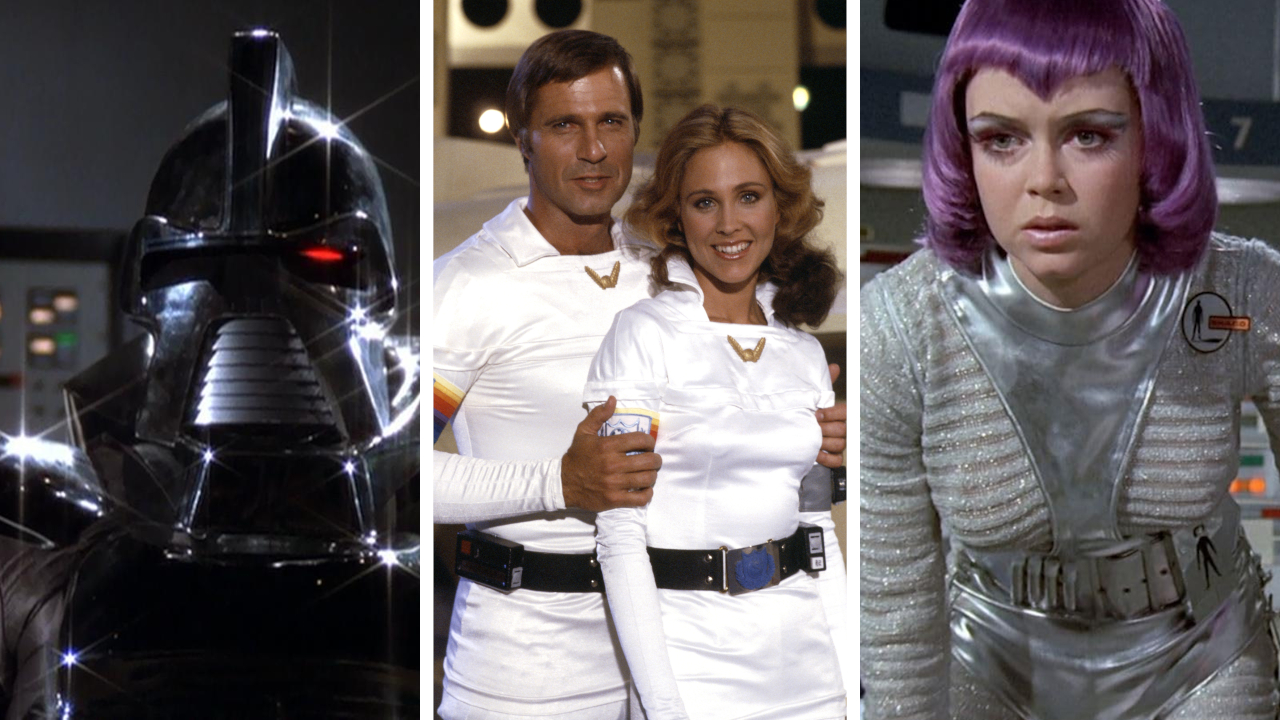Astronauts Open Space Station's Newest Lab
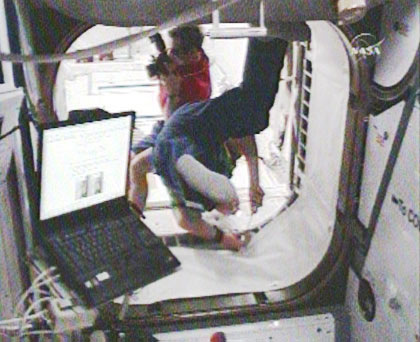
Thisstory was updated at 4:09 p.m. EST.
HOUSTON -Astronauts are opening the International Space Station?s (ISS) newestlaboratory for business Tuesday as they christen the European-built Columbusmodule delivered by the shuttle Atlantis.
Spacewalkershelped attach the 10-ton research laboratory for the European Space Agency(ESA) Monday, addinga shiny new room that astronauts began converting for orbital flight earlythis morning.
?This is agreat moment,? said Frenchastronaut Leopold Eyharts, ESA?s newly arrived station crewmember, as heopened the new lab briefly with German astronaut Hans Schlegel at about 9:08a.m. EST (1408 GMT). ?Hans and I are very proud to he here to ingress for thefirst time the Columbus module.?
Eyharts,Schlegel and station commander Peggy Whitson were among the first to enter thestill-darkened Columbus to take air samples, scan for debris. Flightcontrollers at the module?s new ESA Mission Control center outside Munich,Germany switched on the lights later once power cables were attached.
?We are atthe start of a new era now that the European scientific module Columbus and theISS are connected for many, many years of research in space and cooperationinternationally,? said Schlegel, who will return to spacewalking duty onWednesday after sitting out Monday?s excursion dueto an undisclosed illness.
A fewgrowing pains
Get the Space.com Newsletter
Breaking space news, the latest updates on rocket launches, skywatching events and more!
The 23-foot(7-meter) long Columbus initially drew power from a feed running through thestation?s robotic arm until power, data and cooling lines were be attached,mission managers said. The 14.7-foot (4.5-meter) wide module did encounter apair of cooling system glitches, one on the station side and another insideColumbus itself, though neither poses a threat to the lab?s full operations,they added.
?I don?tthink there is anything amazingly surprising about it,? Alan Thirkettle,station program manager for the ESA, told reporters here at NASA?s JohnsonSpace Center. While Columbus went through an intensive round of tests beforeflight, it is impossible to test for every single possibility, stationofficials said.
Eyharts andColumbus? other first occupants wore protective masks and goggles as aprecaution against any debris that may have stowed away aboard the moduleduring its launch into space. Once air circulates through the module, theresearch lab will be habitable without protective gear, mission managers said.
?Visualinspection is good,? Eyharts said after peeking inside the 1.4 billion euro ($2 billion) laboratory. ?Nosign of debris or condensation and it looks like the atmosphere is of goodquality.?
The newlab?s ESA control center near Munich, Germany is now online, where 100 flightcontrollers and engineers are working in three shifts to watch over Columbusaround the clock alongside U.S. and Russian operations centers, Thirkettle said.The new module is berthed to the starboard side of the station?s hub-like Harmonyconnecting node.
Columbus isthe first new laboratory to arrive at the ISS since NASA?s Destiny module in2001. Japan?s multi-moduleKibo laboratory is also due to launch toward thestation later this spring during NASA?s next two shuttle flights.
The joint stationand shuttle crew will continue outfitting the interior of Columbus over thenext several days, and add external experiments to the module during aspacewalk set for Friday.
MissionControl roused the crew early Tuesday with the song ?A Dream Come True? by JimBrinkman, a tune selected for Atlantis? lead spacewalker Rex Walheim by hiswife Margie and family.
"Doinga spacewalk certainly is a dream come true," Walheim radioed down toMission Control. "But the biggest dream come true is having a wonderfulwife Margie and my two great little boys Alex and Jeffie."
Theastronauts also spoke to reporters about their mission for the first time.
Shuttleastronaut Leland Melvin, who had a brief stint with the NFL before signing withNASA?s astronaut corps, said the view of Earth has been tremendous.
?I havebeen taking pictures since I?ve been up here,? he said.
Extraday decision
Missionmanagers, meanwhile, are discussing whether to extend the shuttle crew?salready extended12-day spaceflight by an extra day to squeeze one more day of Columbusoutfitting into their schedule.
?If youextend the mission one extra day, you get to keep Hans onboard and he is aspecialist in Columbus commissioning,? said Kirk Shireman,NASA?s deputy ISS program manager, of Schlegel.
But addingone more day to Atlantis? flight would require the shuttle to use oxygensupplies for its fuel cells that could be used to replenish high-pressure tanksused for ISS spacewalks, Shireman added.
?That?s thetrade that we?re working together,? he said.
Engineershave cleared a small torn thermal insulation blanket on Atlantis' starboard aftengine pod of any concerns for landing. NASA has kept a close watch on shuttleheat shield health since the 2003 Columbia tragedy.
"That'sgreat news," Atlantis commander Stephen Frick said as Mission Controlradioed up the good news. "It's a relief knowing we don't have to go backthere and mess with it."
Atlantis?seven-astronaut crew is currently scheduled to return to Earth on Feb. 19.
NASA isbroadcasting Atlantis' STS-122 mission live on NASA TV. Click here for SPACE.com'sshuttle mission coverage and NASA TV feed.
- NEW IMAGES: STS-122 Launch Day for Shuttle Atlantis
- VIDEO: ESA's New Science Laboratory
- Complete Space Shuttle Mission Coverage
Join our Space Forums to keep talking space on the latest missions, night sky and more! And if you have a news tip, correction or comment, let us know at: community@space.com.

Tariq is the Editor-in-Chief of Space.com and joined the team in 2001, first as an intern and staff writer, and later as an editor. He covers human spaceflight, exploration and space science, as well as skywatching and entertainment. He became Space.com's Managing Editor in 2009 and Editor-in-Chief in 2019. Before joining Space.com, Tariq was a staff reporter for The Los Angeles Times covering education and city beats in La Habra, Fullerton and Huntington Beach. In October 2022, Tariq received the Harry Kolcum Award for excellence in space reporting from the National Space Club Florida Committee. He is also an Eagle Scout (yes, he has the Space Exploration merit badge) and went to Space Camp four times as a kid and a fifth time as an adult. He has journalism degrees from the University of Southern California and New York University. You can find Tariq at Space.com and as the co-host to the This Week In Space podcast with space historian Rod Pyle on the TWiT network. To see his latest project, you can follow Tariq on Twitter @tariqjmalik.
